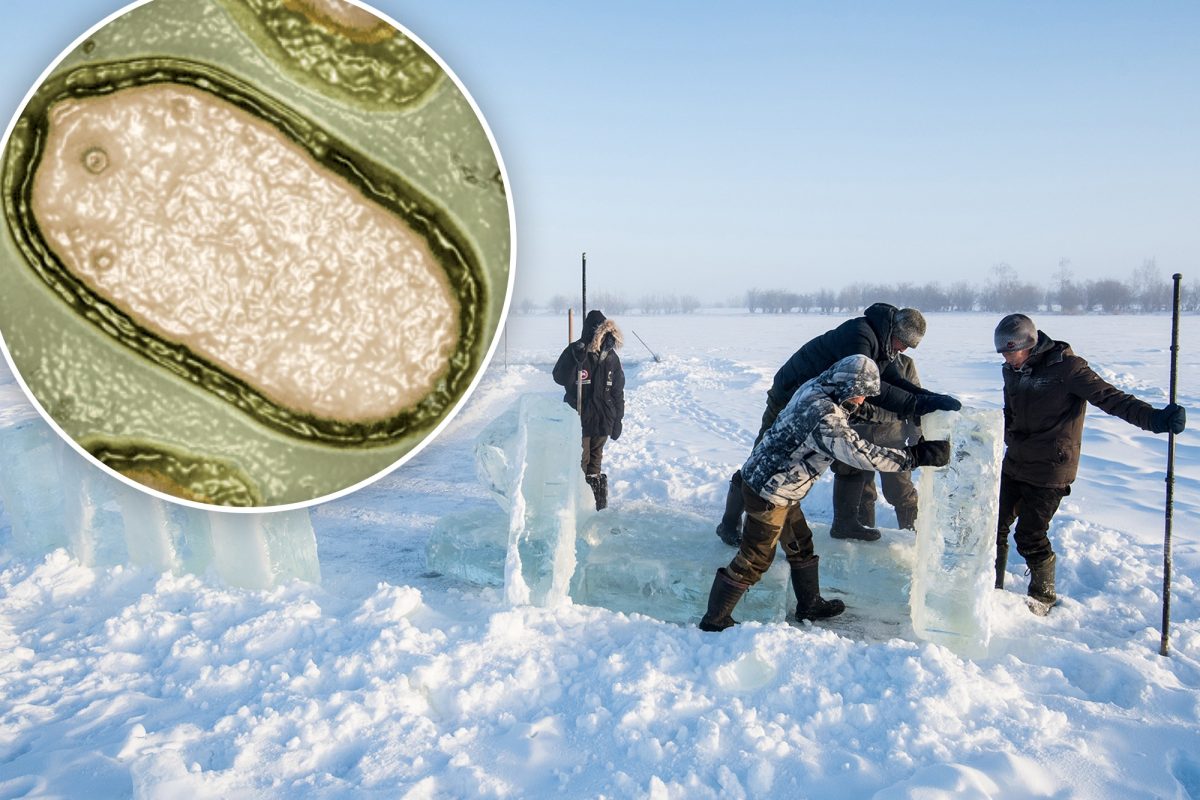
Zombie Virus: There are many secrets hidden on earth. Whose biggest mystery is the Arctic itself. Research agencies around the world are conducting research on the Arctic. On the basis of which the report came, which could prove to be a threat to human colonies (Homo-sapiens). (Arctic Zombie Virus)
Viruses that cause deadly diseases are buried in the Arctic. One of these viruses is zombie virus. The zombie virus is the seed of an imminent future threat to humanity, sown in the Arctic. As the ice melts there, the virus could escape and threaten human settlements around the world. Know here what is this zombie virus and why should one be afraid of it?
Scientists have warned that humanity is facing the threat of a strange new pandemic after the Corona virus. They say that ancient viruses frozen in Arctic permafrost may one day come out due to the Earth's warming climate and cause the spread of major disease.
The strains of these Methuselah microbes – Or zombie viruses, as they are also known – have already been isolated by researchers, who have raised fears of a new global medical crisis. A major health crisis may not be caused by a disease new to science but by a disease from the distant past.
As a result, scientists have begun planning an Arctic surveillance network that would detect early cases of disease caused by ancient microbes. In addition it will provide quarantine and specialist medical treatment for infected people, to contain the outbreak and prevent infected people from leaving the area. (zombie virus)
Jean-Michel Claverie, a geneticist at Aix-Marseille University, said analysis of pandemic risks at the moment focuses on diseases that could emerge in southern regions and then spread to the north. In contrast, very little attention has been paid to an outbreak that may have emerged in the far north and then moved south – and I believe this is a mistake. There are viruses that can infect humans and cause new disease outbreaks.
This point was supported by virologist Marion Koopmans of the Rotterdam Medical Center. We don't know what viruses are hiding in the permafrost, but I think there's a real risk that a disease might be able to spread. About the ancient form of polio. We should accept that something like this can happen. (zombie virus)
In 2014 Claverie led a team of scientists who isolated living viruses in Siberia and showed they could still infect single-celled organisms – even if they had been buried in permafrost for thousands of years. Further research published last year revealed the existence of different viral strains from seven different sites in Siberia and showed these could infect cultured cells. One virus sample was found to be 48,500 years old. (Zombie Virus)
“The viruses we isolated were only capable of infecting amoebas and posed no threat to humans,” Claverie said. “However, this does not mean that other viruses – which are currently frozen in permafrost – may not be capable of causing disease in humans. “For example, we have identified genomic traces of poxvirus and herpesvirus, which are known human pathogens.”
Permafrost covers a fifth of the Northern Hemisphere and is made up of soil that has been kept at sub-zero temperatures for long periods of time. Scientists have discovered that some layers have been stable for thousands of years. (Zombie Virus)
“The important thing about permafrost is that it is cold, dark and lacks oxygen, which is perfect for preserving organic material,” Clavery told the Observer last week. “You can put yogurt in permafrost and it may still be edible 50,000 years from now.” (zombie virus)
But the world's permafrost is changing. The planet's major reserves – the upper layers of Canada, Siberia and Alaska – are melting as climate change disproportionately affects the Arctic. According to meteorologists, this region is warming many times faster than the average rate of global warming.
However, it is not directly the melting of permafrost that poses the most immediate threat, Clavery said. “The threat comes from another global warming effect: the disappearance of Arctic sea ice. This allowed to increase shipping, traffic and industrial development in Siberia. Large-scale mining operations are being planned, and large holes are being drilled into the deep permafrost to extract oil. going ore
“Those operations will release large amounts of pathogens that are still thriving there. Miners will go in and inhale the virus. The effects could be devastating.”
This was emphasized by Koopmans. “If you look at the history of pandemic outbreaks, one of the main causes is land use change. The Nipah virus was spread by fruit bats, which were driven from their habitat by humans. Similarly, monkeypox has been linked to the spread of urbanization in Africa. And that is what we are going to see in the Arctic: a complete change in land use, and that could be dangerous, as we have seen elsewhere.”
Scientists believe that permafrost – At its deepest levels – it may harbor viruses that are up to a million years old and therefore much older than our own species, which is thought to have emerged around 300,000 years ago. (zombie virus)
 look news india
look news india